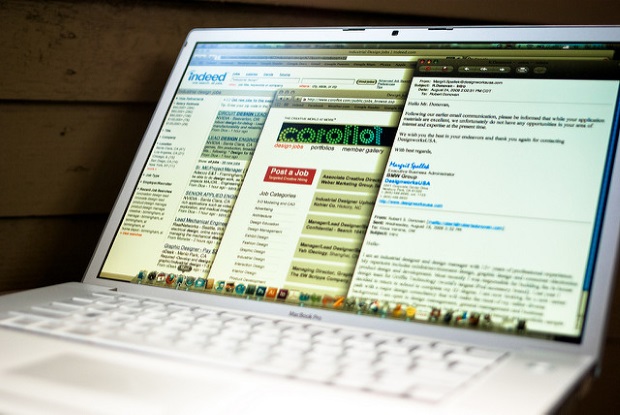10 Ways Job Searching Has Changed in 10 Years

Job searching has transformed since 2011; smart job seekers must adapt.
According to a recent Prudential study, 26% of American workers will be job hunting this year. As the economy begins to restabilize post-pandemic, a large number of workers should look to join or rejoin the workforce in the coming months. However, given the rapid advances in technology, the job application process has undergone relatively dramatic and, at the same time, nuanced changes in the last decade. To help ensure more successful job searching for the millions that will be looking for employment opportunities this summer and fall, the FlexJobs career coaching team has identified 10 ways job searching in 2021 has changed since 2011.
“In working with thousands of clients over the last few years, we’ve seen the same job seeker misconceptions pop up routinely,” said Brie Reynolds, Career Development Manager and Coach at FlexJobs. “Many of the missteps we see revolve around a misunderstanding of how the job search and application process has changed in the last decade, so we hope that highlighting the differences will help people be more successful in their job search,” Reynolds concluded.
Below are 10 keys to successful job searching in 2021 that were not a part of the job searching process in 2011, according to the FlexJobs career coaching team.
1. Resume-related: Focus on keyword-rich resumes
Many employers use an applicant tracking system (ATS), which enables searching resumes by keywords. To ensure a resume is “seen” by the ATS, it needs to be tailored specifically to each job by using relevant keywords from the respective job posting. Additionally, recruiters and hiring managers are only spending an average of six to seven seconds looking at resumes initially, so these keywords need to pop out right away in order to attract their attention.
2. Be prepared for video interviews
Video interviewing has become a more standard and accepted way to conduct interviews, especially as a result of the pandemic. Because this may be one of the first ways a potential employer “sees” a candidate, preparing a background is an important step to incorporate into the interview preparation process. When preparing a background for a virtual interview, job seekers can either use a physical background or a virtual background. If using a physical background, prepping it is important. Keep it simple, free from distractions, and uncluttered.
A background should not take away from the candidate or what they’re saying. Try to avoid backlighting and incorporate natural light, if possible, or find a position near lighting that comes from in front of you. If using a virtual background, select something with a clean and simple representation. It may be best to go with a traditional office look versus a heavily personalized background. Lighting considerations also apply when selecting a background. Always practice with a background prior to an interview, whether physical or virtual, to help create the best presentation.
3. Understand AI-led job interviews
Sometimes called an asynchronous interview (AI), a one-way interview is a prescreening tool employers use for determining whether or not to move candidates to the next round of interviews. Many employers are switching to one-way video interviews to be able to interview more candidates, widen their talent pool, and assess job seekers’ technology skills. If presented with a one-way interview, be prepared to answer five to seven general interview questions recorded on a video screen (with no interviewer on the other end) with about 30 seconds in between. Candidates are usually given a deadline to record their responses on their own time.
4. Highlight remote work aptitude
Job seekers should rebrand as remote workers with success working in remote, flexible, and distributed settings, and carry this throughout their resume, cover letter, and LinkedIn profile. In the professional summary section, state the number of years you’ve worked remotely and include some of the technology systems utilized throughout your career. Also, include “remote” next to job titles in the professional experience section of a resume. A few examples may be 100% Remote, Fully Remote, and Partial Remote with Globally Distributed Teams. Lastly, create a technology section specifically stating the remote collaboration tools and other platforms you have worked with. This demonstrates a candidate’s comfort with technology and flexible working environments.
5. Resume-related: Only include the most recent 10-15 years of experience
Focus is now expected to center around the most recent and most relevant experience, rather than an entire career history. Even if a job seeker has done impressive things for many years, anything beyond the last 10-15 years of work history can actually do a disservice to their candidacy for a job, especially as it relates to protection against ageism.

6. Resume-related: Leave off the references and street address
Employers expect candidates to have references, so there’s no need to take up valuable real estate on a resume with those names and contact information! Instead, references can be provided later when requested during the interview process. Older resume formats often included a header at the top of the page that included the job seeker’s name, address, and contact info. But today, there’s no reason to include a home address, particularly when applying for a remote job. Although some employers might need to know where a candidate lives if the job has a location requirement, it’s common practice to only add the city, state, and zip code of residence. Leaving off a street address (and other personal info.) can also prevent the possibility of identity theft should the resume wind up where it doesn’t belong.
7. Choose a professional and friendly salutation
Using “dear hiring manager or recruiter” is fine as a last resort, but try searching for the hiring manager or recruiter’s name online first. Avoid using Mr. or Ms. because it may misgender the hiring manager. Not everyone identifies as perceived, so job seekers will want to be aware of cultural norms around gender and language. Instead, use their name, and avoid using “to whom it may concern,” as this phrase is no longer in use and can signal that a job seeker did not do any research on the company.
8. Be selective with email provider
Use a current email provider, like Gmail. Others, such as AOL, Hotmail, and internet service provider email addresses are outdated and not recommended anymore.
9. Have an online presence, starting with LinkedIn
Over 90% of recruiters and employers will look for a LinkedIn profile to compare to a candidate’s resume. Also, using a sample size of 24,570 fictitious job applications, one study found that resumes that included a link to a comprehensive LinkedIn profile received far more interview callbacks than resumes that included only a bare-bones LinkedIn profile or no profile at all––a 71% higher chance.
10. Resume-related: Use a summary and skills section instead of an objective
An objective statement used to be common practice for job seekers to tell the employer what kind of position or industry they were seeking for employment. This statement is no longer a standard practice, because now it’s imperative that a candidate includes the skills they bring to match what the company is looking for. Highlight top skills and accomplishments in the summary, and be sure to tailor each resume by utilizing keywords and phrases from the job description.
Job seekers can also now access a robust database of Q&As from the FlexJobs career coaching team, who offer resume reviews, one-on-one coaching sessions, mock interviews, and other support.
For more information, please visit https://www.flexjobs.com/blog/post/job-searching-changed-last-decade/ or contact Kathy Gardner at kgardner@flexjobs.com.
About FlexJobs
FlexJobs is the leading career service specializing in remote and flexible jobs, with over 100 million people having used its resources since 2007. FlexJobs provides the largest database of vetted remote and flexible job listings, from entry-level to executive, startups to public companies, part-time to full-time and freelance. To support job seekers in all phases of their journey, FlexJobs also offers expert advice and career coaching services. In addition, FlexJobs works with leading companies to recruit quality remote talent and optimize their remote and flexible workplace. A trusted source for data, trends, and insight, FlexJobs has been cited in top national outlets, including CNN, The Wall Street Journal, The New York Times, CNBC, Forbes magazine, and many more. Follow FlexJobs on LinkedIn, Facebook, Twitter, Instagram, TikTok and YouTube.


